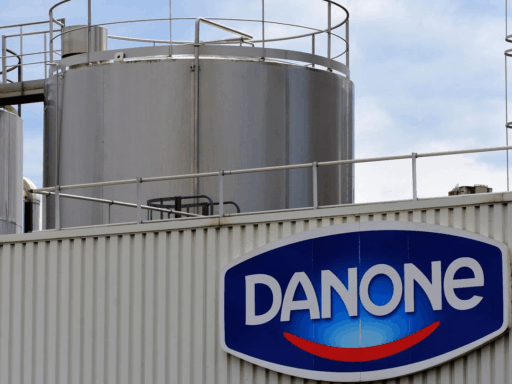Ford Motor Company, an iconic name in the automotive industry, has long been committed to producing high-quality vehicles and ensuring that its operations, products, and processes align with sustainable practices. The company’s sustainability journey is centered on creating a greener future through environmental stewardship, social responsibility, and innovative technologies that drive change in the automotive industry. Ford’s sustainability goals, including its commitment to achieving carbon neutrality by 2050, offer deep insights into the company’s long-term vision for reducing its environmental footprint.
Through strategic planning, forward-thinking goals, and impactful partnerships, Ford is positioning itself as a leader in sustainable mobility. This article explores the various dimensions of Ford’s sustainability strategy, including emissions reduction, renewable energy adoption, circular economy initiatives, and more, while providing detailed insights into how these efforts are contributing to both global sustainability and Ford’s own corporate growth.
Ford’s Sustainability Strategy: Core Pillars and Key Goals
Ford’s sustainability strategy is grounded in three main pillars:
- Climate Change and Carbon Neutrality
- Circular Economy and Waste Reduction
- Community Engagement and Social Impact
Each of these pillars focuses on creating lasting value not only for Ford but also for the planet and its people. Below are detailed insights into Ford’s sustainability goals and initiatives under each pillar.
Climate Change and Carbon Neutrality
Ford’s most ambitious goal is to achieve carbon neutrality across its global operations by 2050. The company recognizes that the automotive industry is a significant contributor to greenhouse gas (GHG) emissions, making it crucial to reduce its carbon footprint to align with the global Paris Agreement and limit global temperature rise to well below 2°C.
Key Initiatives:
- Carbon-Free Manufacturing: Ford has committed to using 100% renewable energy across all its manufacturing facilities by 2035. As of 2022, 60% of its electricity came from carbon-free sources.
- Transition to Electric Vehicles (EVs): Ford has pledged that 50% of its global vehicle sales will be electric by 2030. As part of this commitment, the company is investing $22 billion in electrification through 2025. This includes models like the F-150 Lightning, which has already made waves as the best-selling electric pickup truck in America.
- Production Milestones: By 2026, Ford expects to produce over 2 million electric vehicles annually. This rapid scale-up of EV production is part of the company’s effort to reduce emissions from its product lifecycle — focusing on reducing Scope 1, 2, and 3 emissions.
Measurable Impact:
- Reduction in Scope 1 & 2 Emissions: From 2017 to 2022, Ford successfully reduced manufacturing emissions by 40% and aims for a 50% reduction by 2035.
- Carbon-Free Energy: In 2022, Ford achieved 60% carbon-free electricity in its operations, and the company’s Mexico manufacturing plants have achieved 100% renewable energy.
Ford’s approach to carbon neutrality is bold, but its commitment to electrification is equally ambitious. The company’s investment in renewable energy and carbon-free manufacturing will undoubtedly shape the automotive industry’s future.
Circular Economy and Waste Reduction
A cornerstone of Ford’s sustainability strategy is embracing a circular economy, focusing on minimizing waste, promoting resource reuse, and ensuring sustainability across the entire vehicle lifecycle.
Key Initiatives:
- Zero Waste to Landfill: Ford is targeting zero waste to landfill across all of its manufacturing facilities by 2025. This involves optimizing the recycling and reuse of materials used in production, reducing waste at every step of the manufacturing process.
- Recycling and Materials Innovation: Ford is working towards using more recycled materials in its vehicles. For example, the company has incorporated recycled plastic bottles into the interior parts of vehicles, including seats and door panels. Additionally, Ford is exploring the use of bio-based materials in the production of vehicle components.
- Battery Recycling and Upcycling: Ford is committed to the recycling of EV batteries. Through partnerships with Redwood Materials and other recyclers, Ford is working to build a closed-loop battery recycling system to recover critical materials such as lithium, nickel, and cobalt, minimizing the environmental impact of mining these materials.
Measurable Impact:
- Plastic Recycling: In 2022, Ford repurposed 25 million plastic bottles into vehicle components, contributing to its goal of reducing plastic waste from its operations.
- Circularity in Production: Ford’s F-150 Lightning and Mustang Mach-E feature increased use of recycled materials, aligning with the company’s overall goal to improve material circularity in production.
Ford’s commitment to the circular economy is rooted in continuous innovation in material usage, waste management, and battery recycling. By driving efficiencies and closing the loop on material flows, Ford is moving towards a more sustainable automotive ecosystem.
Renewable Energy Adoption
Ford recognizes that transitioning to renewable energy is fundamental to achieving its carbon-neutral goals. The company is actively pursuing investments in solar and wind energy, both in its manufacturing plants and through partnerships with energy providers.
Key Initiatives:
- Renewable Energy Projects: Ford has launched solar and wind energy projects across the U.S. and globally. For example, Ford’s Rouge Electric Vehicle Center is powered by solar energy, enabling the company to manufacture the F-150 Lightning in a sustainable facility.
- Sustainable Product Offerings: Through collaborations with DTE Energy, Ford is working to create clean energy infrastructure to support electric vehicles (EVs) and charging stations across the U.S. The company has installed solar panels at several of its plants and is also supporting the development of smart grid technology that improves energy efficiency.
Measurable Impact:
- Energy Efficiency: Ford’s renewable energy initiatives have contributed to a 40% reduction in emissions from its manufacturing plants over the last 5 years.
- Energy Generation: By 2023, Ford installed over 20,000 solar panels across its facilities, producing 2.5 megawatts of renewable energy.
Through these renewable energy initiatives, Ford is not only reducing its emissions but also helping create the infrastructure needed to support the growing demand for clean energy.
Water Stewardship and Resource Management
Water use is another critical area of focus for Ford’s sustainability efforts. The company acknowledges that water scarcity is a growing concern in many regions where it operates, and it aims to reduce its overall water usage through innovative water management strategies.
Key Initiatives:
- Water Recycling and Reuse: Ford has introduced several water recycling systems at its facilities to recycle water used in production processes. These systems help reduce the demand for fresh water and decrease wastewater production.
- Water Conservation in Operations: Ford has implemented water-efficient technologies, such as low-flow faucets and cooling systems, to reduce water consumption across its operations.
Measurable Impact:
- Water Use Reduction: Ford has decreased its water use by 10% across global manufacturing plants since 2018, saving approximately 3 million gallons of water annually.
- Water Recycling Programs: Ford’s Mexico operations now recycle 80% of their water, contributing to Ford’s overall goal of reducing freshwater use by 15% by 2025.
Ford’s water stewardship strategy is integral to its broader sustainability goals, and through continued investment in water management technologies, Ford is conserving vital water resources across its operations.
Ford’s Future Sustainability Plans
Looking ahead, Ford is committed to ambitious sustainability goals that focus on accelerating the adoption of electric vehicles, reducing emissions, and enhancing the sustainability of its supply chain.
Key Future Goals:
- Achieve Carbon Neutrality by 2050: Ford is on track to meet carbon neutrality by 2050, focusing on further reducing emissions from vehicle production and supply chain operations.
- Increase EV Production: By 2026, Ford plans to produce over 2 million EVs annually. This includes expanding its EV lineup to cater to a wider variety of consumers.
- 100% Renewable Energy by 2035: Ford aims to power all of its global manufacturing plants with 100% renewable energy by 2035, focusing on solar, wind, and battery storage technologies.
- Circularity in Materials: Ford is working to close the loop on vehicle materials by implementing 100% recyclable products and responsible material sourcing from sustainable sources.
Ford’s Competitors in Sustainability: A Comparison
Ford’s sustainability efforts are on par with, and in many ways exceed, those of its competitors. Here’s how Ford compares to key players in the automotive industry.
| Company | Carbon Neutrality Target | Electric Vehicle Investment | Renewable Energy Goal |
|---|---|---|---|
| Ford | 2050 | $50B (2022-2026) | 100% by 2035 |
| GM | 2040 | $35B (2020-2025) | 100% by 2035 |
| Tesla | 2030 | $20B (EV and energy expansion) | 100% by 2030 |
| Toyota | 2050 | $13.6B (battery tech) | 100% by 2050 |
Ford Motor Company’s commitment to sustainability is comprehensive, forward-thinking, and ambitious. From carbon neutrality goals and renewable energy projects to EV expansion and water stewardship, Ford is deeply embedded in the transformation of the automotive industry. While challenges such as EV market dynamics and supply chain complexity remain, Ford’s strategic plans are well-positioned to meet its long-term sustainability targets.
As Ford continues its journey toward a greener future, it will undoubtedly play a pivotal role in shaping the future of sustainable mobility and environmental stewardship.
Sources
- https://corporate.ford.com/social-impact/sustainability.html
- https://corporate.ford.com/content/dam/corporate/us/en-us/documents/reports/2023-integrated-sustainability-and-financial-report-summary.pdf
- https://media.ford.com/content/fordmedia/fna/us/en/news/2023/12/11/ford-sustainability-report.html
- https://www.ford.com/media-center/news/2022/05/ford-ev-production-goals.html
- https://media.ford.com/content/fordmedia/fna/us/en/news/2023/07/27/ford-invests-in-blueoval-city-ev-manufacturing.html
- https://media.ford.com/content/fordmedia/fna/us/en/news/2023/10/10/bmw-ford-honda-form-chargescape.html
- https://www.ford.com/content/dam/brand_ford/en_us/brand/resources/general/pdf/sustainability/ford-sustainability-report-2022.pdf
- https://www.reuters.com/business/autos-transportation/ford-hybrid-ev-sales-q1-2024-2024-04-02/
- https://www.nytimes.com/2024/03/25/business/chinese-evs-ford.html
- https://www.gm.com/responsibility/sustainability.html
- https://global.toyota/en/sustainability/report/






